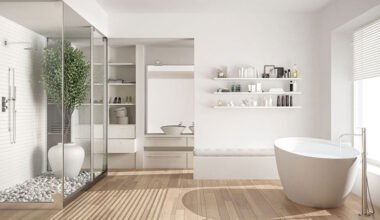Small builds live or die by clear motion, safe power, and parts you can fit into tight spaces. Springs hit hard and stretch, cable tricks slip or bind, and big motors add heat and noise you do not want near desks, cabinets, or van furniture. A 12-volt linear drive turns a simple command into a smooth push or pull with known force and travel, so lids rise cleanly, trays glide, and vents move in small, predictable steps. Because 12V runs cool and draws modest current, you can route short cables, tuck a compact supply behind a panel, and avoid heavy rewiring. That makes it a good match for hidden TV lifts, flip-up worktops, greenhouse vents, light hatches, camera rigs, and slide-outs in tiny homes. You press a switch, it moves; you release it, it rests. The result is motion that feels calm and controlled, the kind people accept in living spaces, classrooms, and shops.
Power and Sizing Without Headaches
Most DIY setups already have a 12V source: a small adapter under the bench, a sealed battery in a cabinet, or a van/boat system that also feeds lights. That keeps install simple and heat low. Start with the path the part must travel and the weight it must move; pick a stroke to match the path, then choose a load rating with a safe margin. Speed is a taste call – lids and drawers feel better when they do not snap. If you need a clear view of options laid out in plain terms, browse linear actuators 12v and watch how stroke and load step up through the range. Short strokes suit locks and catches, mid-strokes fit lids and drawers, and longer strokes serve lifts and wide hatches. The aim is steady motion without a thump at the stop or a wobble mid-way, so the piece looks built-in rather than hacked on.
Real Projects That Benefit Right Away
Think through a few common builds and the gains are clear. A flip-up bench rises to a safe working height, stays there while you glue or drill, then settles without a knock that could shift a joint. A TV lift glides from a cabinet, holds level, and docks cleanly without rattling trim. In a greenhouse, vents open in small steps as air warms and close as it cools, which keeps plants happy without a loud fan. In van and tiny-home layouts, slide-out beds and kitchen drawers extend with a gentle push, keep fingers safe, and lock in place for travel. These are places where force alone is not the point; control is. You want repeatable starts, clean lines, and stops that feel soft, so people focus on the space, not the mechanism. Done right, the drive fades into the background, and the object feels like it was always meant to move.
Mounting, Alignment, and Wiring That Age Well
How you mount a drive decides how it sounds and lasts. Keep brackets in line, so the rod does not see side load that chews seals and grows noise. Use clevis ends, so the rod can follow the hinge arc as angles change through the stroke, and give the mechanism a clear path before you tighten bolts. Add a small service loop, so cables never rub on edges, and put a fuse near the supply. When you want drawings that match common hole patterns and hardware that bolts up without guesswork, Progressive Automations helps: clear specs, matched brackets, and simple wiring diagrams speed the build. After a dry run with the real load, listen. A new scrape or pitch shift means a bracket is skewed, or the path is too tight. Fix the cause now, and you protect the motor, the finish, and your weekend.
Control, Safety, and Quiet Behavior Indoors and Out
You can keep control simple with a rocker that reverses polarity for extend and retract. If you want a timed stop or a set position, add a small controller that watches limits and pauses at the right point every time. A soft pad where a lid meets a frame turns a sharp knock into a gentle settle, and a mild ramp up and down keeps pets from jumping and kids from flinching when movement starts. For parts that live outside, use sealed units and protect connectors; a short drip loop keeps water from tracking into housings. Indoors, dust on tracks and loose hardware raise noise over time, so wipe and check on a simple cycle. Good control is not about fancy screens; it is about motion that is easy to use and hard to misuse, so the device earns trust in shared spaces.
Planning, Testing, and Care That Make Builds Last
Measure start and end points with hinges and sliders installed, then mock the stroke with tape and a block to spot clashes before you drill the first hole. Pick a drive with at least a one-third cushion over the real load so a wet lid, a stack of books, or a pot left on a shelf does not stall the move. Decide where power will live and how you will cut it fast for service. During the first full cycle, watch the rod and listen for changes in tone; that is your early warning that something is misaligned. Fix the root cause rather than forcing a larger drive into a bent mount. A light care loop – wipe dust, confirm fasteners, test end-to-end – pays back in silent starts and clean stops. When motion is calm, wiring is neat, and controls are obvious, the mechanism disappears and the room feels better for it – exactly what you wanted when you sketched the idea in the first place.



